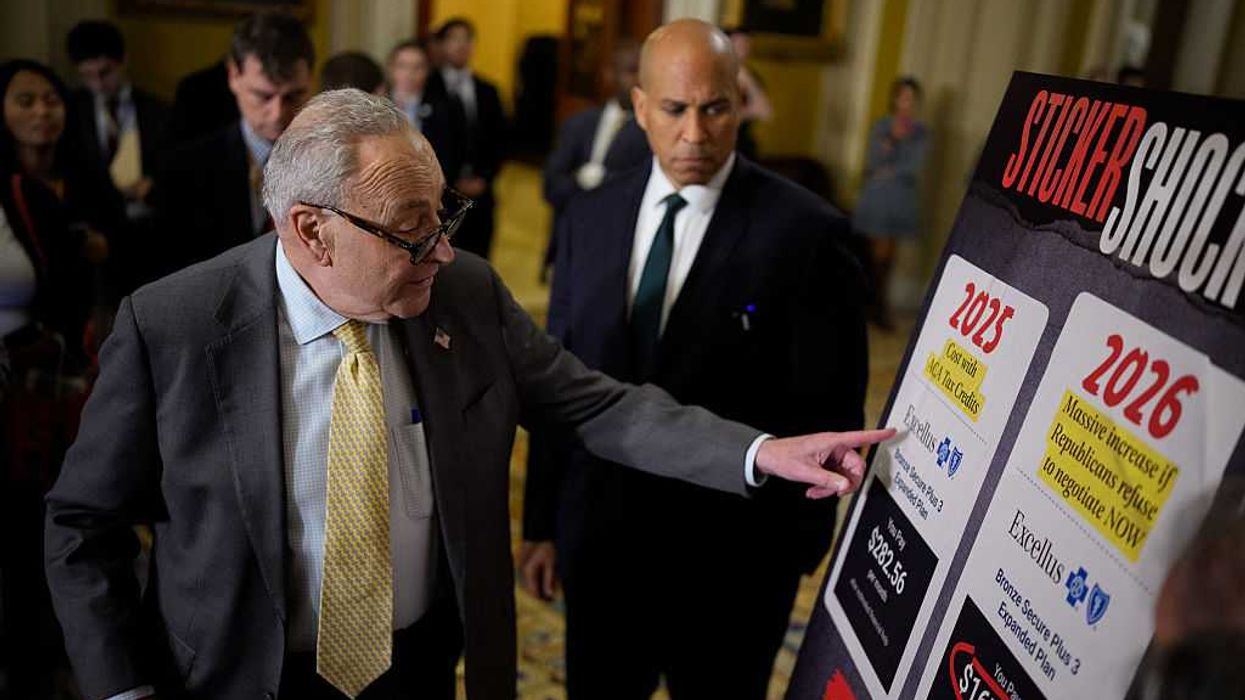
© 2025 Blaze Media LLC. All rights reserved.
"We have simply reached the point that we must conserve cash."
 The nearly bankrupt U.S. Postal Service on Thursday reported a quarterly loss of $5.2 billion and warned it will miss another payment due to the Treasury, just one week after its first-ever default on a payment for future retiree health benefits.
The nearly bankrupt U.S. Postal Service on Thursday reported a quarterly loss of $5.2 billion and warned it will miss another payment due to the Treasury, just one week after its first-ever default on a payment for future retiree health benefits.
From April to June, losses were $2.1 billion more than during the same period last year.
The mail agency said it is being hurt significantly by mounting costs for future retiree health benefits. Those expenses made up $3.1 billion of the post office's quarterly loss.
Declining first-class mail volume also contributed to losses.
"We have simply reached the point that we must conserve cash," Thurgood Marshall Jr., chairman of the Postal Service's board of governors, said in explaining the payment defaults. He cautioned that the mail agency may have to delay other payments if necessary but that day-to-day mail service will not be impacted in any way.
The Postal Service for months has been urging Congress to pass a Senate bill that would allow it to eliminate Saturday mail delivery and reduce the annual health payment of more than $5 billion. However, Congress has fought the bill because, they say, the cuts aren’t deep enough and it doesn’t allow for meaningful and long-term restructuring of the agency. After the House headed home for a five-week break, the post office defaulted on that payment.
The mail agency says it will miss the second $5.6 billion payment due on Sept. 30, also for future retiree benefits, as cash runs close to zero.
"We remain confident that Congress will do its part to help put the Postal Service on a path to financial stability," said Postmaster General Patrick Donahoe. "We will continue to take actions under our control to improve operational efficiency and generate revenue by offering new products and services to meet our customers' changing needs."
Overall, the post office had operating revenue of $15.6 billion from April through June, the third quarter of its 2012 fiscal year. That was down a fraction from the same period last year. But quarterly expenses this year climbed to $20.8 billion, up 10 percent, largely driven by the health prepayments. The Postal Service is the only government agency required to make such payments.
 The Postal Service also has been hurt by declining mail volume as people and businesses continue switching to the Internet in place of letters and paper bills. The number of items mailed during the last quarter was 38.5 billion pieces, a 4 percent decrease, much of it in first-class mail.
The Postal Service also has been hurt by declining mail volume as people and businesses continue switching to the Internet in place of letters and paper bills. The number of items mailed during the last quarter was 38.5 billion pieces, a 4 percent decrease, much of it in first-class mail.
On the positive side, the mail agency reported that it continued to lower costs by reducing work hours and boosting employee productivity. The Postal Service's fast-growing shipping services, which include express and priority mail, had a 9 percent increase in operating revenue to $3.3 billion.
That strong growth in shipping services, which the mail agency is promoting as a cheaper alternative to FedEx and UPS, helped offset roughly three-fourths of the continuing declines in first-class mail, said Stephen Masse, the Postal Service's acting chief financial officer.
The numbers bring the Postal Service's year-to-date net loss to $11.6 billion, compared to $5.7 billion for the same period last year.
The agency has forecast a record $14.1 billion loss by the end of this year. Without legislative changes, it said, annual losses will exceed $21 billion by 2016.
The Senate passed a postal bill in April that would have provided financial relief in part by reducing the annual health payments and providing an $11 billion cash infusion, basically a refund of overpayments the Postal Service made to a federal pension fund. The House, however, remains stalled over a separate bill that would allow for aggressive cuts, including an end to Saturday delivery. Rural lawmakers, in particular, worry about the impact of closures in their communities.
The Postal Service originally sought to close low-revenue post offices in rural areas to save money but after strong public opposition it is now moving forward with a new plan to keep 13,000 open with shorter operating hours.
Follow Becket Adams (@BecketAdams) on Twitter
The Associated Press contributed to this report.
Want to leave a tip?
We answer to you. Help keep our content free of advertisers and big tech censorship by leaving a tip today.
Want to join the conversation?
Already a subscriber?
more stories
Sign up for the Blaze newsletter
By signing up, you agree to our Privacy Policy and Terms of Use, and agree to receive content that may sometimes include advertisements. You may opt out at any time.
Related Content
© 2025 Blaze Media LLC. All rights reserved.
Get the stories that matter most delivered directly to your inbox.
By signing up, you agree to our Privacy Policy and Terms of Use, and agree to receive content that may sometimes include advertisements. You may opt out at any time.





